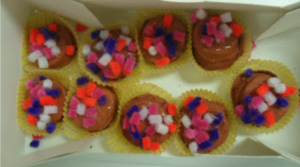
Eating Disorders And an Art Therapy Approach.

Art Therapy is well integrated in leading hospitals in UK, USA, and Singapore to name but a few, providing a specialized service, in the form of Eating disorder rehabilitation programmes.
Art Therapy is a valued asset in the support of Eating Disorders and is an evidence-based treatment.
Eating Disorders (ED), are indeed one of the most complex illnesses, requiring intensive, usually prolonged intervention. Many battling ED have a strong resistance to treatment and have the ability to masterfully hide the extent of their ED to family and friends, and in turn, mistrust professionals who they feel are trying to rid them of their closest, yet deadliest friend (ED).
Art therapy has the benefit of reaching the client in a non-threatening approach, it gives the ED sufferer control of the image created, and control of the art materials. More importantly in art therapy to verbalize their ED is not enforced, the process and artwork created is enough.
I along with my colleagues at ATIC have worked with many children, families and adults in UK, France and Singapore, managing a variety of Eating Disorders. Through my experience, in both inpatient (specialized eating disorder rehabilitation care), and in providing outpatient support at ATIC in Singapore and Dubai, I have found art therapy to be a valued approach allowing ED suffers to express their feelings in a concrete manner through the control of external art media which is therapeutically profound for adult or child confronting their ED.
The word ‘control’ being the operative word, as for many ED sufferers, control is at the very crux of thei eating disorder. For the Anorexic the need to control and starve emotion and for theBulimic the need to release and often lose control, although simplistic in its analogy it is very true for many sufferers.
Of course you can also have anorexics who purge, and sufferers can pendulum from anorexia to bulimia and so forth, categorized merely by weight in addition to symptomology. But what is going on under the glaring symptom of a destructive relationship towards food? More importantly the destructive relationship toward the ‘self’? Each ED sufferer should have the opportunity to understand their own relationship with themselves, others and with food equally.
 A great example on how art therapy can help sufferers with an eating disorder from an art therapy perspective is through its process. Managing ED can be overwhelming for the individual and for their loved ones. Art Therapy serves as a platform for pause, reflection and restoration.
A great example on how art therapy can help sufferers with an eating disorder from an art therapy perspective is through its process. Managing ED can be overwhelming for the individual and for their loved ones. Art Therapy serves as a platform for pause, reflection and restoration.
I will give you an example, within the art therapy process those with an ED have the opportunity to play out their relationship with food through the art materials, the art media symbolically represents/parallels their relationship with food.
In short, the art media is seen as a buffet of food. By encouraging the child or adult to experiment with different art materials e.g. for the anorexic progress from controlled media to less controlled media and for the bulimic move from regressive art media to more controlled materials.
Such exploration of art materials can provide a significant understanding to their ED behaviour, providing a platform for subsequent change. However, this example should be viewed as just one component while the ED sufferer can begin to understand other possible deeper contributors.
In addition, the process of art making helps those with ED develop trust within a triangular relationship; art, client and therapist. Such relationship is unique, facilitating an added level of safety in exploring difficult, confusing and complex feelings. Safety and support can be further appropriately reinforced through group art therapy, where identification of similar experiences and struggles can reduce feelings of punishment and being “singled out”.
Art images become a tangible record of their own ED journey and story. Art images created have the ability to be changed, which can also provide the ED sufferer with a level of control. The art work can be used as a reminder for when destructive feelings, and thoughts may surface.
For more information about Art Therapy and Eating Disorders or for further support contact ATIC.
written by: Sara Powell Founder and Art Psychotherapist of ATIC Psychological and Counselling
Center, Dubai.




